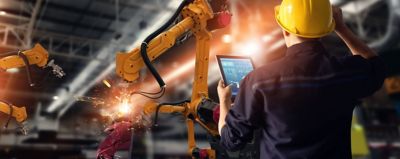If your work involves industrial applications requiring high pressure air or gas, chances are you'll need an air compressor. In this article, we'll answer the question, what is an air compressor?
With various options, models, and sizes available, it's important to know the components and technology involved in this equipment. Understanding such details is useful for making the right choice for your industrial facility.
This information is especially helpful in minimising your operating costs, saving on energy usage and unnecessary maintenance. We aim to assist you in reducing redundancy by pointing you towards the most appropriate equipment.
What is an air compressor, and which one do I need?
Before diving into the different types of air compressors, it's good to go into the fundamentals of how they work. Essentially, all air compressors create pressurised air using an element or air end.
This air is stored in a tank until it's released via a hose and valve for various industrial applications. This air powers all sorts of equipment and is used in everything from auto repairs and home improvement projects to medical and hospitality.
Building on this simple concept, there are multiple ways to build up air pressure. These different approaches come in the form of which air end is used. There are two main types of air compressor element design - piston and rotary screw.
The main difference between these air end compositions lies in their capabilities. Piston air compressors are mostly used for smaller applications, and come in transportable models. Instead, rotary screw compressors are ideal for medium and large-scale operations.
Additionally, rotary screw air compressors cost a bit more to buy, but come with energy saving features and technology. Since piston air compressors are simple by design, they're less equipped for smart factories and modern setups.
Piston air compressors
As the name suggests, a piston air compressor uses a piston to compress air. Comprised of two cylinders, this arrangement pressurises air as it moves from one drum to another. It's the most straightforward approach to generating pressurised air.
In a related article, we explain the difference between oil-injected and oil-free piston air compressors. Since friction is created as the piston moves, oil is usually required to keep everything running smoothly.
However, there are also oil-free models, which use fans and other alternatives to cool heat caused by the metal components. This equipment perfectly suits your needs if pure air is important for your application.
Since piston air compressors are simple by design, they're fairly easy to maintain and run. If your application is relatively small or requires movement between work sites, a piston air compressor might be ideal.
If you'd like to maximise your efficiency and maintain fairly low operating costs, then it's worth looking into rotary screw air compressors.
Rotary screw air compressors
Instead of using a piston to compress air, rotary screw compressors use two screw rotors to achieve the same goal.
We go into various setups in our article on air compressor technology, which is worth checking out. It dives into how and why rotary screw air compressors are superior to piston compressors.
These advancements come in the form of different technologies, monitoring tools, and devices designed for rotary screw air compressors. Additionally, it's possible to use different mechanisms for powering the rotors.
Our latest rotary screw air compressors are built with an interior permanent magnet (iPM) motor, and come with variable speed drive (VSD).
These two technologies are not possible with a piston air compressor. VSD is especially helpful in reducing energy costs, as it allows the motor to change speed depending on air demand.
As mentioned above, these machines require more upfront costs but generally minimise expenses in the long run. These savings come from increased compressed air efficiency.
Get tailored advice
Still have questions after reading? Our expert is ready to help you make sense of it all and guide you to the best solution.
Write to an Expert Today – Get the answers you need.






